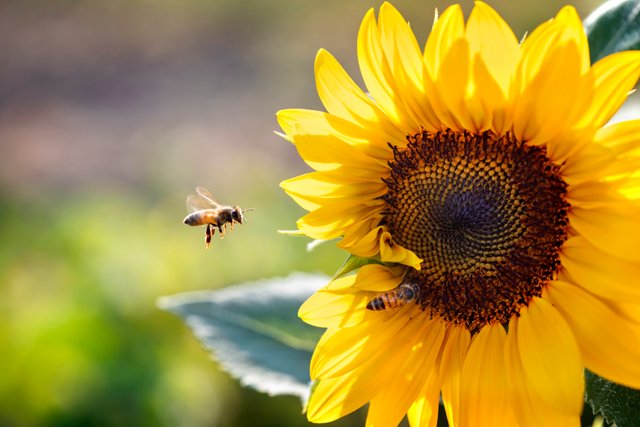Sunflowers are highly nutritious food source for bees
A recent investigation conducted by experts from the University of Massachusetts Amherst suggests that the prickly pollen derived from sunflower plants can reduce the prevalence of a frequently occurring bee parasite by up to 94%. The scientists wanted to know why some flowers like sunflowers could help bees resist getting sick. They looked at how sunflowers could fight a disease called Crithidia bombi that can be found inside a bee's stomach. They took the spiky part of sunflower pollen and mixed it with the food that some bees ate. Other bees ate food with sunflower medicine in it, but without the spiky part. The group of bees that consumed the prickly part of the sunflower pollen had a lower likelihood of becoming ill compared to the other group. In fact, they had 87% fewer infections from the disease compared to the group that did not consume sunflower pollen.

The researchers found that bees fed pollen from plants in the sunflower family, like ragweed, cocklebur, dandelion, and dog fennel, had lower rates of infection from a harmful pathogen called C. bombi. This suggests that plants in the sunflower family might have natural substances that can fight off diseases in bees. Even though sunflower pollen is not very healthy for bees because it has low protein, it can protect them from gut diseases like C. bombi, which can harm the queen bee and her ability to have babies.
The researchers put bumblebee colonies on 20 different farms that grew different amounts of sunflowers. The team gathered data by collecting samples of bacteria in the bees' stomachs, checking the weight of the bee colonies, and counting the number of daughter queens. The study found that when there were more sunflowers, the bees were less likely to get sick, and the bee colonies had more daughter queens. This study showed that for every significant increase in the amount of sunflower pollen, the number of queen bees produced increased by 30%.
Reference articles: